Tuvalans
Basic Information
Anatomy
Tuvalans are humanoid, though typically taller and more muscular than the average human.
Biological Traits
Tuvalans stand far taller than the average human, indeed, due to the differences in height, untraveled Tuvalan's sometimes believe human's to be children. Tuvalan's also easily grow muscle, combined with their active islander lifestyle, most of them are impressive specimens.
Genetics and Reproduction
Tuvalans are very similar to humans in many ways, including reproduction.
Growth Rate & Stages
Tuvalan's resemble human children until they reach the age of 8, after which they exhibit a rapid growth spurt over the next several years, often reaching 6ft by 12 years. Once a Tuvalan can butt heads with their father, they can declare themselves an adult, and undertake their Awakening and Wayfare to prove themselves an adult. If they return, they are respected a full member of the clan.
Ecology and Habitats
Tuvalans live on a series of islands in the south of Kheran
Dietary Needs and Habits
The typical diet of a Tuvalan is a mixture of shellfish, fish and tropical fruits. However they often dine on more continental fare, stolen from pirated ships.
Additional Information
Social Structure
Tuvalans form clans based on the island of their birth. There is a lot of competition between different Island clans, in peacetime this takes the form of boat races, although it can descend into clan wars. Young Tuvalan's often try to woo partners away from other islands, strengthening their clan whilst weakening another.
Facial characteristics
Typically have slightly larger and more squished noses compared to normal Humans. Some islands have heavy brows, giving them a slightly stupid appearance, though this is not linked to any decrease in intelligence. It is uncommon for a Tuvalan to have hair any colour other than a dark brown or black.
Geographic Origin and Distribution
The largest population of Tuvalans are the natives of the Keola Islands. They are seen rarely in other areas of the world, most commonly in port cities. They have a small enclave in the Free City of Cintra
Civilization and Culture
Naming Traditions
Tuvalan names follow the 1st name, last name convention. Their names can be very long, especially their surnames which impart some family history. Their names are also very melodic
Beauty Ideals
The first thing a Tuvalan looks for in their partner is their Aro, those with more are considered highly desirable. Beyond the Aro, ideals vary from clan to clan. One clan might find combat skill beautiful, whilst others might find sailing proficinies or net weaving skills attractive. As all Tuvalan's are large and muscular, it is not considered to be a significantly attractive factor, in fact a weak Tuvalan might be highly sought after, as it implies a strength beyond the normal.
Gender Ideals
Due to the physical prowess common to them, the Tuvalan's have very little gender differences, there is no need for a woman to stay home and weave nets when she might pull a rope as strong as her husband. A Tuvalan man is expected to learn a non-combat craft such as boat building, fishing or net weaving, whilst Tuvalan women typically work metals, revere the ancestors or construct buildings.
Courtship Ideals
A Tuvalan woman will approach any number of men that she feels attracted to. The men will then gather and perform their Teku, a ritual warrior dance. Sometimes the woman will choose a partner from the dancers, other times she will choose several, and they will then turn to their boats, and race through the razor edged rocks that surround the Keola Islands, the winner returning to his prize.
Relationship Ideals
Relationships differ between clans, some clans are polyamorous, a woman taking a partner for the duration of her pregnancy, after which the child is raised communally amongst the clan. Other clans are monogamous, a woman choosing a partner for life, and raising the child together. Both types of clans look down upon the other, the polyamorous clans saying that other clans deprive their children of feeling like a family, whereas monogamous tribes claim that they strengthen a child by not muddying its ancestry.
Major Language Groups and Dialects
Tuvalans are all fluent in Tuvalan, and most, though not all are able to speak common. Some Clan Elders, though able to understand Common refuse to speak it, mostly in an effort to irritate and isolate outsiders.
Common Dress Code
Tuvalans normally wear a mixture of traditional islander clothes, combined with interesting pieces of clothing that they have 'liberated' from other ships. They will often adorn themselves with jewelry, although only items they have won themselves.
Traditional Tuvalan clothing are taken from the islands and the sea surrounding them, leather capes from the Tu'alla, woven skirts from long grasses, vests with seashell scales worked into them
Tuvalans beyond the isles, wether exiled or not, often wear as much traditional clothing as they can, to more strongly identify themselves to their people.
Common Customs, Traditions and Rituals
The most important tradition to the Tuvala is the Aro, the traditional markings of an individual's deeds. Tuvalan children bear no Aro until their Day of Awakening, whereupon the Island Aro is tattooed across their right arm. Upon their return from their Wayfare, they are tattooed with a scene from their voyage. From then on, whenever a Tuvala performs a deed worthy of tales, it is marked upon their skin. Most Tuvala only have two or three Aro, however legendary chieftains or Captains may have many more. Op'peio is said to have his skin so covered in Aro, he could blend into the darkest nights, only the whites of his eyes betraying his presence.
An exiled Tuvalan's Clan Aro is blocked away, changed into a black smear upon their skin. A bird Aro is then marked upon their forehead, showing them as one who has flown from the clan, never to return.
Tuvalan's revere no Gods, though they are aware of them. Infact they often do what they can to irrate and annoy such gods, whilst also denying their existance. Instead, Tuvalans revere the deeds of their ancestors. Upon the death of a notable Tuvalan, if their body is recoverable, their family might strip their Aro from their body, and cure it, so that their deeds might live on, through the clan's history.
Common Myths and Legends
Op'peio is one of the Tuvalan's greatest heros. Stories tell of his clans warship, burdened high with the pillage of the high seas was caught in a sudden storm. Amongst the treasures piled high upon the deck were idols of the vengeful Uprus, who summoned a terrible tempest to smite those who dare insult him so. Op'peio's captain Tuv'ali was struck down by a bolt lightning.
Alarmed by the sudden storm and loss of their captain, the ship's crew began to panic, abandoning their posts.
Now unmanned, and adrift in gigantic waves, the burdened ship was dangerously close to capsizing, inevitably killing all those aboard.
It was in this moment that Op'peio, the youngest aboard, with only his island and Calling tattoos took up the captains place, wrestling with the rudder as he took up song. It was the rhythm of their clan's warrior dance, barely audible, a single, breaking voice over the crashing of the waves.
One by one however, his comrades heard It and joined in, calming the sailors. The ship slowly balanced itself, and under Op'peio's hand navigated his way out of the tempest, back toward their island, Koa'ta'tan.
Upon arriving back, the clan elders initially doubted Op'peio's actions, how could a young musician lead a group of hardy sailors when all was lost. However they were eventually convinced, and Op'peio was marked upon his back, a large tattoo of a tiny ship dwarfed by waves. Legends say he found the idol of Uprus within the treasure, melted in down and recast it into a golden armband that he wore in spite of the God.
RPG Datasheet
See Goliath entry Mountain Born replaced with Sea Reaver (From Minotaur playable race, UA Waterborne Adventures) Giant Language replaced with Tuvalan
Scientific Name
Homo Golathi
Origin/Ancestry
Pacific Islander
Lifespan
Tuvalans have lifespans comparable to humans. They enter adulthood in their late teens and usually live less than a century.
Average Height
7-8ft tall
Average Weight
280-340lbs (Medium)
Average Physique
Taller and more muscular than humans
Body Tint, Colouring and Marking
Tuvalans cover themselves in black tribal tattoos, called the Aro.
Remove these ads. Join the Worldbuilders Guild


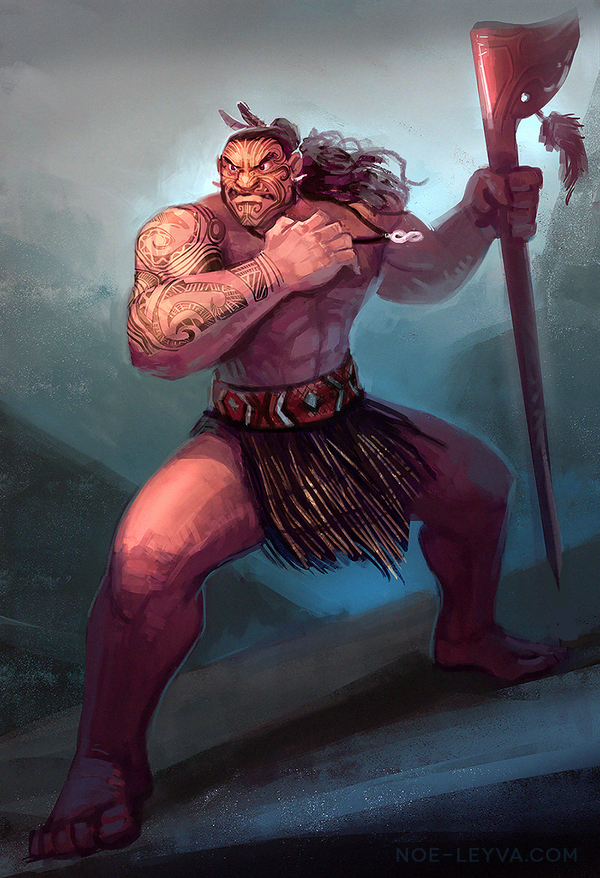

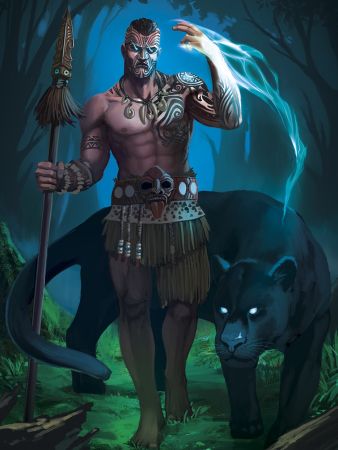
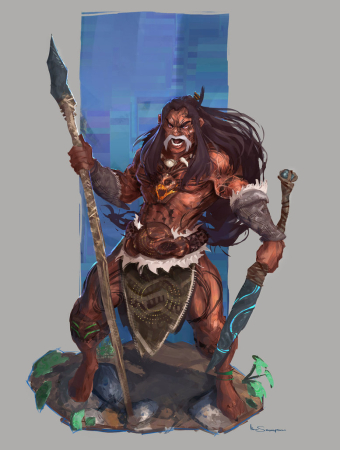
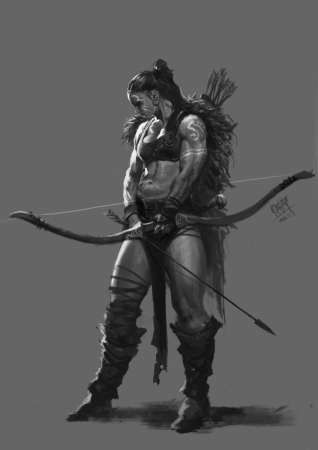
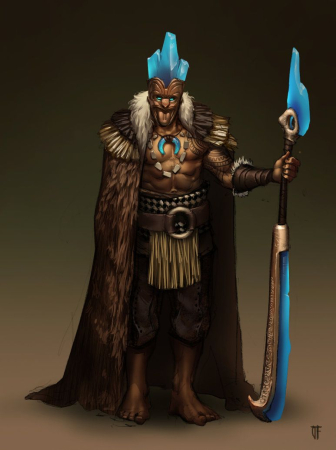
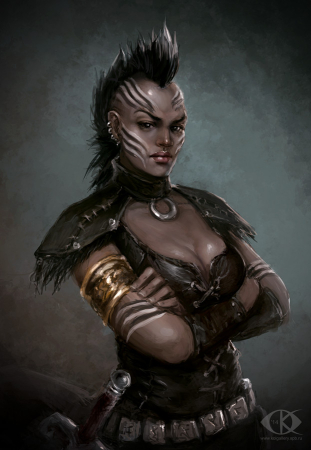
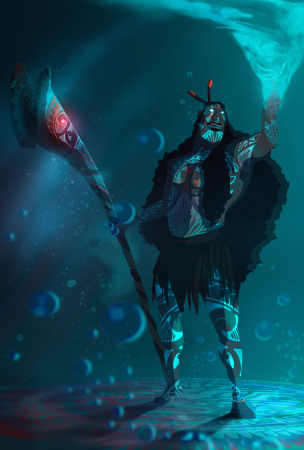



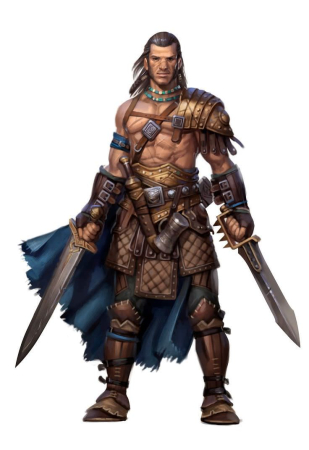






Comments